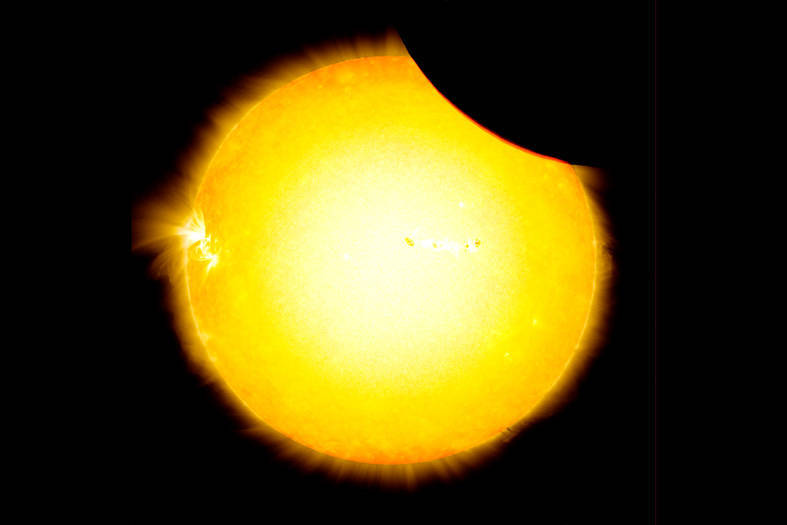《TAIPEI TIMES》 April to bring celestial wonders

A partial solar eclipse is pictured in an undated photograph. Photo courtesy of the Taipei Astronomical Museum
/ Staff writer, with CNA
Astronomy buffs can look forward to promising celestial events throughout this month — including a brighter-than-usual Mercury, a partial solar eclipse and a meteor shower — the Taipei Astronomical Museum said.
Mercury, which is often difficult to view because of its proximity to the sun, would be brighter and well-separated from the star on Wednesday next week, the museum said last week.
That is when the planet is at its greatest elongation — as far as it ever gets from the sun as seen from Earth — it said, advising stargazers to look west soon after sunset to catch a glimpse of the planet.
Meanwhile, a partial solar eclipse is to occur on April 20, with those in southern Taiwan expected to have a better view thanks to its proximity to the path of totality, which passes over parts of Indonesia and Australia, it said.
The eclipse is to begin at 1:10pm and last 36 minutes, with about 10 percent of the sun’s surface blocked at its peak, the museum said.
Weather permitting, the phenomenon, described in ancient China as “a skydog swallowing the sun,” will be visible to the naked eye across Taiwan proper, it said.
The event is somewhat rare, as the next solar eclipse of any kind visible from Taiwan would not occur until 2030, it said, while cautioning sun gazers to wear protective glasses when viewing the partial solar eclipse.
Finally, the Lyrid meteor shower is to peak on April 23, the museum said.
Sky watchers can expect to see dozens of bright shooting stars per hour during the peak, as there would be little interference from a crescent moon, it said.
The meteor shower gets its name because its radiant is located near Alpha Lyrae, the brightest star in the constellation Lyra.
新聞來源:TAIPEI TIMES


















